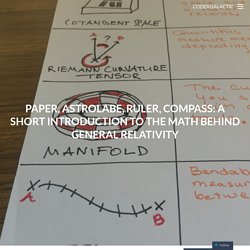

The Feynman Lectures on Physics. EINSTEIN: VISUALIZE THE IMPOSSIBLE. Einstein Archives Online. Digital Einstein Papers Home. Zombie physics: 6 baffling results that just won't die. When a scientific result seems to show something genuinely new, subsequent experiments are supposed to either confirm it — triggering a textbook rewrite — or show it to be a measurement anomaly or experimental blunder.

But some findings seem to remain forever stuck in the middle ground between light and shadow. Even efforts to replicate these results — normally science’s equivalent of Valyrian steel — have little effect. Welcome to the realm of undead physics. Ahead of Halloween, Nature guides you through some findings in physics, astronomy and cosmology that researchers have repeatedly left for dead — only to find that they keep coming back. Axis of evil The dim afterglow of the Big Bang, known as the cosmic microwave background (CMB), is virtually uniform in all directions. ESA-Planck collaboration Planck satellite's map of the Cosmic Microwave Background should be blandly uniform but an 'axis of evil' courses through it, and a cold spot lurks in its southern hemisphere.
A. PSI/A. Paper, astrolabe, ruler, compass: a short introduction to the math behind general relativity. I’m going attempt to give an accessible introduction to general relativity for non-mathematicians without glossing over the mathematical objects one must get a feel for to be able to follow research in the area.

Let me know how successful I am! The visual summary of the text below is here: At its heart, general relativity (GR) is a theory that posits that what we experience as gravity is a result of of the shape of the space in which we live–spacetime. The fundamental equations of GR, the Einstein Field Equations, can be written as: quantities quantifying the "shape of the space"=quantities quantifying matter in that space meaning we can easily switch between the two descriptions. How does gravity result from all of this? CGWAS 2015 - Caltech Gravitational Wave Astrophysics School 2015. Wave-Particle Duality' And Quantum Uncertainty - Two Sides Of The Same Mystery? If you think of quantum physics in terms of information about a system, it is a lot less complicated, according to a new paper.

In that context, features of the quantum world previously considered distinct - wave-particle duality and the quantum uncertainty principle - are different manifestations of the same thing. Wave-particle duality is the idea that a quantum object can behave like a wave, but that the wave behaviour disappears if you try to locate the object. It's most simply seen in a double slit experiment, where single particles, electrons, say, are fired one by one at a screen containing two narrow slits. The particles pile up behind the slits not in two heaps as classical objects would, but in a stripy pattern like you'd expect for waves interfering. At least this is what happens until you sneak a look at which slit a particle goes through - do that and the interference pattern vanishes.
Quantum physics says that particles can behave like waves, and vice versa. The big problem with the Apple Watch is that time is an illusion. There are plenty of reasons to be skeptical of the just-revealed Apple Watch.

Who wants to use a touchscreen that tiny? Why would I want to send my heartbeat to my friends (a real feature of the watch emphasized in the product's unveiling)? Why should people who aren't titans of finance spend $349 on a watch? But the best reason for skepticism is that it's, at root, a watch, with the primary purpose of telling time. And time is an illusion The unreality of time No, you fool, time isn't a flat circle, time is NOTHING. While arguments against the existence of time date back at least to the pre-Socratic Greek philosopher Parmenides, it was first comprehensively laid out in its modern form in the Cambridge philosopher J.M.E.
"That's nonsense! " It also leads to an infinite regress. The ABCs of the philosophy of time Got my A series on the table, got my B series in the drawer. A better counterargument argues that "past/present/future" isn't the only way to think about time.